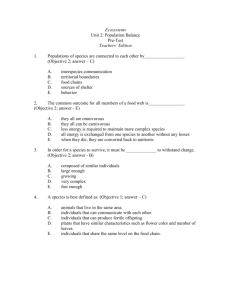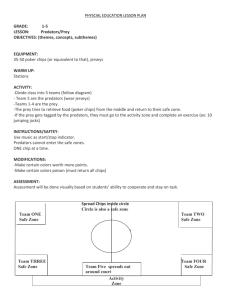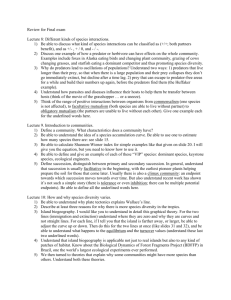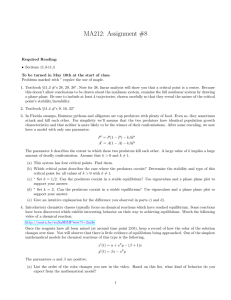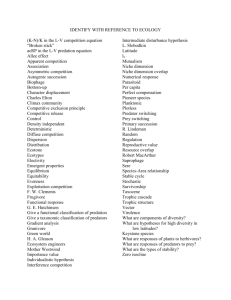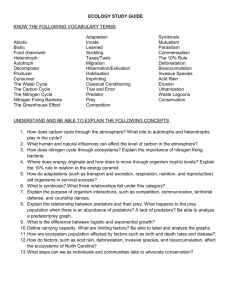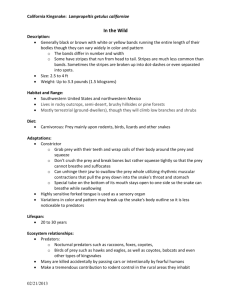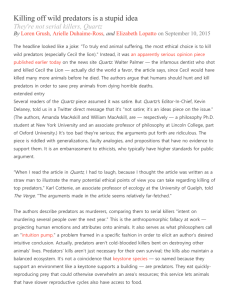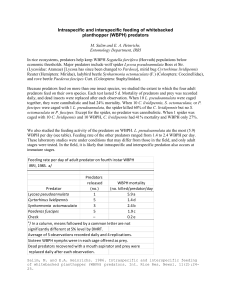This week, we started out by reviewing last week`s talking points. For
advertisement
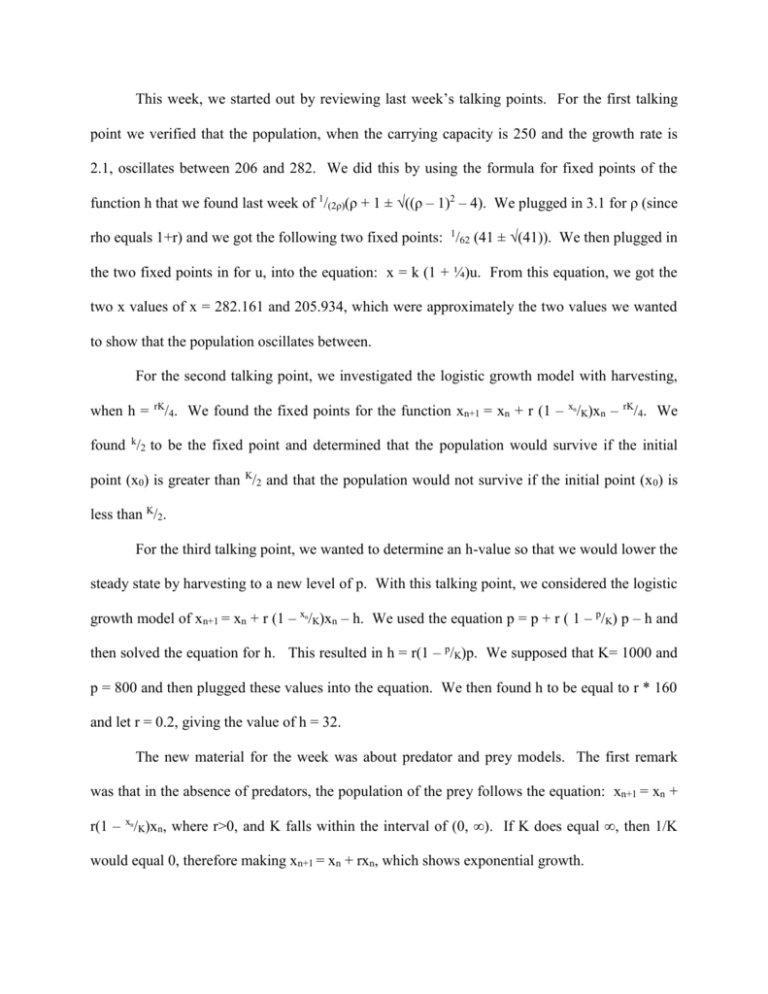
This week, we started out by reviewing last week’s talking points. For the first talking point we verified that the population, when the carrying capacity is 250 and the growth rate is 2.1, oscillates between 206 and 282. We did this by using the formula for fixed points of the function h that we found last week of 1/(2ρ)(ρ + 1 ± √((ρ – 1)2 – 4). We plugged in 3.1 for ρ (since rho equals 1+r) and we got the following two fixed points: 1/62 (41 ± √(41)). We then plugged in the two fixed points in for u, into the equation: x = k (1 + ¼)u. From this equation, we got the two x values of x = 282.161 and 205.934, which were approximately the two values we wanted to show that the population oscillates between. For the second talking point, we investigated the logistic growth model with harvesting, when h = /4. We found the fixed points for the function xn+1 = xn + r (1 – xn/K)xn – rK rK /4. We found k/2 to be the fixed point and determined that the population would survive if the initial point (x0) is greater than K/2 and that the population would not survive if the initial point (x 0) is less than K/2. For the third talking point, we wanted to determine an h-value so that we would lower the steady state by harvesting to a new level of p. With this talking point, we considered the logistic growth model of xn+1 = xn + r (1 – xn/K)xn – h. We used the equation p = p + r ( 1 – p/K) p – h and then solved the equation for h. This resulted in h = r(1 – p/K)p. We supposed that K= 1000 and p = 800 and then plugged these values into the equation. We then found h to be equal to r * 160 and let r = 0.2, giving the value of h = 32. The new material for the week was about predator and prey models. The first remark was that in the absence of predators, the population of the prey follows the equation: xn+1 = xn + r(1 – xn/K)xn, where r>0, and K falls within the interval of (0, ∞). If K does equal ∞, then 1/K would equal 0, therefore making xn+1 = xn + rxn, which shows exponential growth. The next remark was that predators will go to extinction in the absence of prey. The equation demonstrating the population of the predators is yn+1 = yn – syn, where s falls within the interval of (0, 1] and is the decay rate of the predators. However, if s = 1, then yn+1 would equal zero and the population of predators would be wiped out. The equation that models the population of prey when there isn’t an absence of predators is as follows: xn+1 = xn + r(1 – xn/K)xn - αxnyn, where yn represents the predators. The equation that models the population of predators when there isn’t an absence of prey is as follows: yn+1 = yn – syn + βxnyn. α represents the predator efficiency on prey, where β is the utilization of prey by predators. We found the steady states by looking at the two possibilities of y = 0 and x = s/β. If y = 0, then two of the equilibrium points are (0, 0), (K, 0). If y≠0, then x = s/β and then third equilibrium point is (s/β, r/α (1 - s/βK)). We then discussed the linearization of equilibrium points. We let u = x - 𝑥̅ and v = y - 𝑦̅. Using the first equation, we said Un+1 = xn+1 - 𝑥̅ . By plugging in xn + r(1 – xn/K)xn - αxnyn for xn+1, Un+1 resulted in (1 + r – /K - α𝑦̅) Un - α𝑥̅ Vn – r/KUn2 – αUnVn (we had a few more terms, but 2rx once plugging in all three equilibrium points, these terms equaled 0). We did the same for Vn+1 = yn+1 - 𝑦̅ and got the result of Vn+1 = βyUn + ( 1 – s + βx)Vn + βUnVn. We also put these two equations into a matrix and vector form. Lastly, we discussed how to accurately estimate the square root of 10, using linearization. We also estimated it by using Newton’s Method and with both methods, we got approximately the same answer of 3.166228. The idea of linearization is that we can drop the quadratic term if the value for x is small enough.


